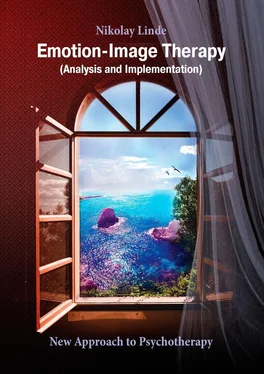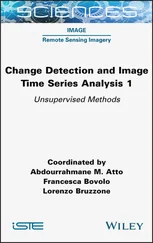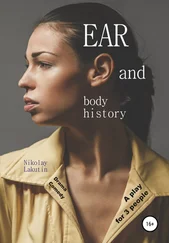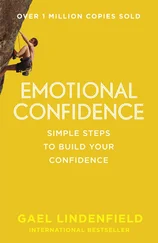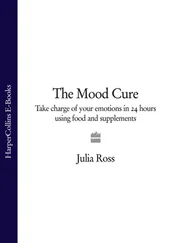Nikolay Linde - Emotion-Image Therapy. Analysis and Implementation
Здесь есть возможность читать онлайн «Nikolay Linde - Emotion-Image Therapy. Analysis and Implementation» — ознакомительный отрывок электронной книги совершенно бесплатно, а после прочтения отрывка купить полную версию. В некоторых случаях можно слушать аудио, скачать через торрент в формате fb2 и присутствует краткое содержание. ISBN: , Жанр: Здоровье, psy_generic, на английском языке. Описание произведения, (предисловие) а так же отзывы посетителей доступны на портале библиотеки ЛибКат.
- Название:Emotion-Image Therapy. Analysis and Implementation
- Автор:
- Жанр:
- Год:неизвестен
- ISBN:9785449698827
- Рейтинг книги:5 / 5. Голосов: 1
-
Избранное:Добавить в избранное
- Отзывы:
-
Ваша оценка:
- 100
- 1
- 2
- 3
- 4
- 5
Emotion-Image Therapy. Analysis and Implementation: краткое содержание, описание и аннотация
Предлагаем к чтению аннотацию, описание, краткое содержание или предисловие (зависит от того, что написал сам автор книги «Emotion-Image Therapy. Analysis and Implementation»). Если вы не нашли необходимую информацию о книге — напишите в комментариях, мы постараемся отыскать её.
Emotion-Image Therapy. Analysis and Implementation — читать онлайн ознакомительный отрывок
Ниже представлен текст книги, разбитый по страницам. Система сохранения места последней прочитанной страницы, позволяет с удобством читать онлайн бесплатно книгу «Emotion-Image Therapy. Analysis and Implementation», без необходимости каждый раз заново искать на чём Вы остановились. Поставьте закладку, и сможете в любой момент перейти на страницу, на которой закончили чтение.
Интервал:
Закладка:
It is also important for correct diagnosing to know that the feeling of duty is mostly located in the shoulders area and that containing your breathing leads to controlling any feelings. So when feelings are released clients feel something like additional breathing, they say that they have never breathed like this before [see examples].
What is amazing is that when you help the client to get rid of the oppressive feeling of duty, not only shoulder muscles relax but many clients have the feeling as if they had big white wings on their backs like angels in pictures. Instead of oppression they feel an increase of energy and inspiration. It turns out that images can express not only emotional problems, but character and even the old and the new approach to life.
The theory of Wilhelm Reich and his practice are aimed at releasing held down emotions, relaxing muscle armor, and his techniques are meant to work with tense muscles. To achieve this the doctor presses on the tense muscles of the body, making the client breathe deeply and express in sounds the pain he feels. The success is achieved when the whole muscle shell is fully and steady relaxed which requires a long and hard work. Similar effects may be achieved by working with images of emotional states and it may be quicker and easier.
In EIT the task of relaxing muscles is done by working with images, and the task is not only to free the stuck emotions but to remove psychodynamic conflict that generates chronic negative emotional state. The initial negative state disappears. Alongside with this sometimes you may get the result similar to full relaxation of the muscle shell in some areas of the body for instance in the back [see example 2] or even in the whole body [see example 4]. But you achieve this by different means than in body therapy and without painful influence on body muscles [see further].
Example 4. “Live mercury”
A young girl turned to me and complained that at some moment in her life she lost the ability to express her feelings [alexitimia]. She prohibited herself to do it and couldn’t overcome her own prohibition. Feelings overfilled her breast and tortured her from within. She lost contact with her mother and her boyfriend whom she loved very much. She lost her ability to express her feelings a year before when her father whom she loved dearly died. She was afraid to express her feelings because she didn’t want to hurt her mother. In their family, they declared the rule that you must not express your feelings you must restrain them. The father particularly insisted on that and was an example of restraint himself.
I asked her to create an image of these feelings. They were like a moving clot of mercury changing its form. It tried to get away from the breast but some armor like a knight’s cuirass didn’t let it go. Then I asked her to give a permission to this steel cuirass to express all its feelings. This paradoxical method worked and the cuirass melted at once, and feelings started flowing from the girl’s mouth [the client’s subjective perception] so intensively that she could hardly breathe, she choked.
To make sure that the process of liberating will not fail because of her fear, I began to calm her down saying that gradually everything will be back to normal. It is just what happened, little by little her breathing became even, the felt that her feelings go on flowing, but the flow is quiet. But she started shaking all over, she felt cold, her hands and feet were shaking but at the same time she was feeling unusually fine. Her body seemed to be very light and disappeared, and the air while breathing is freely moving through her body from the crown of her head to her heels and back. Such sensations are typical of those who had an intensive course of bodily therapy together with rebirthing [the séance of deep breathing].
In about twenty minutes the process ended by itself, the sensation of cold and shaking went away. Imagining her meeting with her boyfriend the girl confirmed that she no had problems with expressing her feelings, the shell disappeared. Her body seemed to have lost some weight, and the air seemed to freely flow within her body. Her eyes shone with happiness, she thanked me and left.
Ways of working with images are numerous. Sometimes it is necessary to let emotions in and not out, sometimes to transform them, to solve an inner conflict, generating them, sometimes it is necessary to refuse wrong convictions, promoting a ban on natural feelings and so on. The story about different ways of influence is still ahead but the connection between emotions and body is the “red line” of our therapeutic logic. It is this connection that guarantees important results in solving psychosomatic problems.
Summary
1. Emotions is energy which becomes revealed in muscles movements.
2. With the help of chronic muscle tension a person suppresses undesirable emotions, so emotions get chronically stuck in some muscle clamps.
3. The system of muscle clamps creates a muscle shell which blocks the free flow of energy about the body and deprives the person of spontaneous and flexible behavior.
4. The muscle shell corresponds to a person’s character. The character is “stuck in and ossified” emotions, which are stereotypes of a person’s behavior.
5. In different parts of the body various feelings and corresponding impulses to actions can be blocked.
6. When the muscle shell is relaxed the person becomes flexible and spontaneous, as though he had no character, but greater energy and freely flowing feelings.
7. Solving basic psychodynamic conflict leads to the relaxation of chronic muscle tensions, removing the chronic block of some emotional state, solving psychological and psychosomatic problems and to the change of character.
Chapter 3. Psychological problem
1. The problem’s inner structure
The novelty and effectiveness of the EIT is to a great extent connected with a new perception of how people’s problems are arranged and how they can be solved. The essence of our approach is that any problem is rooted in some chronic fixation of emotional energy onto some aim, and you can free this energy working with the image of this emotion. Even Buddha called such fixation an attachment and offered a long way of moral development, that helped to get rid of attachments making people suffer. This is correct but psychotherapy cannot and should not make monks out of people, it just helps them to get rid of agonizing and restricting life fixation.
Sigmund Freud [27—29] offered the way of realization deep fixations that by itself leads to liberation. In this sense, what we are saying is not quite new. The new thing is that with the help of images we quickly find the point of fixation, understand the reason and the means of fixation. The new thing is that after diagnosis we ask the client to apply to the image, and in fact to himself [which the client doesn’t understand and so doesn’t resist] some method, liberating him from the initial attachment. This leads to destroying the whole pathological system that had grown on this basis nearly in one instance. If psychoanalyses considered the main element to be awareness, gestalt therapy – emotional experience, the EIT – emotional and meaningful intersubjective [within personal] action.
Let us make it clear, we don’t object to friendly, loving and other normal attachments, which make a person happy. A person frees himself only from such attachments that make him suffer, and are the reason of a chronic negative emotional state, making the basis of pathology. They prevent him from living a normal life, from being healthy, from building satisfying relations with other people. We use original methods allowing to quickly discover the causes of sufferings and to free the suffering individual rather quickly too. As we say: “The irons are removed right here or they are worn forever”. The fixation can melt only at some moment, here and now, at once, if the client is ready to give it up. Everything else is only the preparation of this moment. We will speak about it later.
Читать дальшеИнтервал:
Закладка:
Похожие книги на «Emotion-Image Therapy. Analysis and Implementation»
Представляем Вашему вниманию похожие книги на «Emotion-Image Therapy. Analysis and Implementation» списком для выбора. Мы отобрали схожую по названию и смыслу литературу в надежде предоставить читателям больше вариантов отыскать новые, интересные, ещё непрочитанные произведения.
Обсуждение, отзывы о книге «Emotion-Image Therapy. Analysis and Implementation» и просто собственные мнения читателей. Оставьте ваши комментарии, напишите, что Вы думаете о произведении, его смысле или главных героях. Укажите что конкретно понравилось, а что нет, и почему Вы так считаете.
